Differentiation of ncRNAs from small mRNAs in Escherichia coli O157:H7 EDL933 (EHEC) by combined RNAseq and RIBOseq - ryhB encodes the regulatory RNA RyhB and a peptide, RyhP
- PMID: 28245801
- PMCID: PMC5331693
- DOI: 10.1186/s12864-017-3586-9
Differentiation of ncRNAs from small mRNAs in Escherichia coli O157:H7 EDL933 (EHEC) by combined RNAseq and RIBOseq - ryhB encodes the regulatory RNA RyhB and a peptide, RyhP
Abstract
Background: While NGS allows rapid global detection of transcripts, it remains difficult to distinguish ncRNAs from short mRNAs. To detect potentially translated RNAs, we developed an improved protocol for bacterial ribosomal footprinting (RIBOseq). This allowed distinguishing ncRNA from mRNA in EHEC. A high ratio of ribosomal footprints per transcript (ribosomal coverage value, RCV) is expected to indicate a translated RNA, while a low RCV should point to a non-translated RNA.
Results: Based on their low RCV, 150 novel non-translated EHEC transcripts were identified as putative ncRNAs, representing both antisense and intergenic transcripts, 74 of which had expressed homologs in E. coli MG1655. Bioinformatics analysis predicted statistically significant target regulons for 15 of the intergenic transcripts; experimental analysis revealed 4-fold or higher differential expression of 46 novel ncRNA in different growth media. Out of 329 annotated EHEC ncRNAs, 52 showed an RCV similar to protein-coding genes, of those, 16 had RIBOseq patterns matching annotated genes in other enterobacteriaceae, and 11 seem to possess a Shine-Dalgarno sequence, suggesting that such ncRNAs may encode small proteins instead of being solely non-coding. To support that the RIBOseq signals are reflecting translation, we tested the ribosomal-footprint covered ORF of ryhB and found a phenotype for the encoded peptide in iron-limiting condition.
Conclusion: Determination of the RCV is a useful approach for a rapid first-step differentiation between bacterial ncRNAs and small mRNAs. Further, many known ncRNAs may encode proteins as well.
Figures
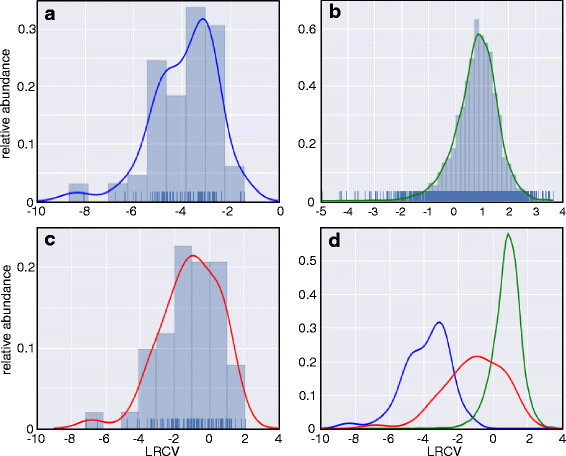
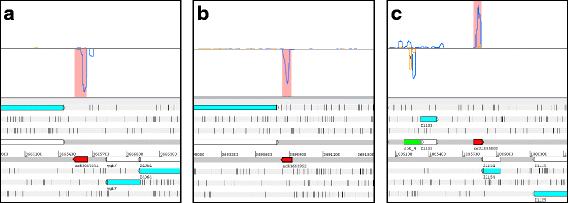
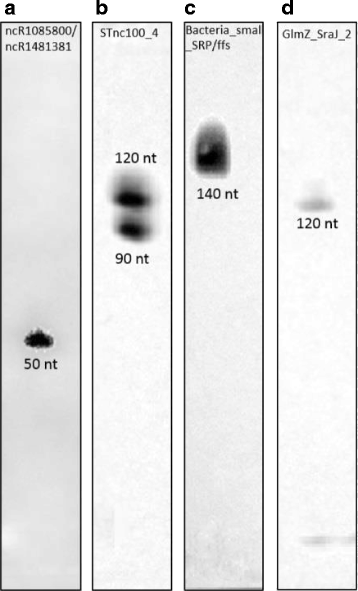
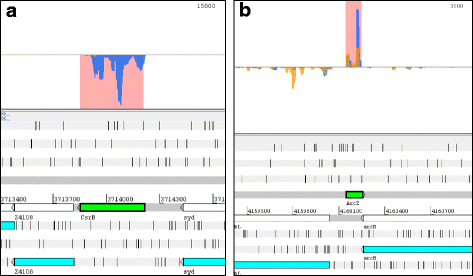
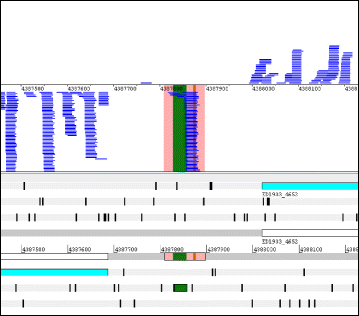
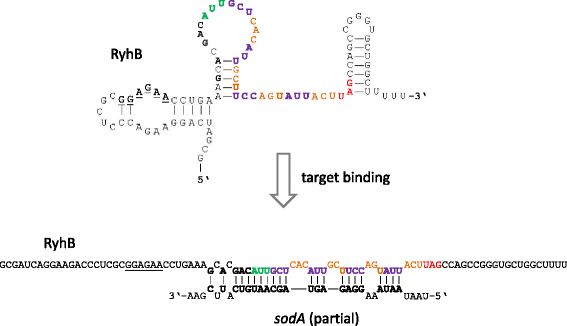
Similar articles
-
Discovery of numerous novel small genes in the intergenic regions of the Escherichia coli O157:H7 Sakai genome.PLoS One. 2017 Sep 13;12(9):e0184119. doi: 10.1371/journal.pone.0184119. eCollection 2017. PLoS One. 2017. PMID: 28902868 Free PMC article.
-
Translatomics combined with transcriptomics and proteomics reveals novel functional, recently evolved orphan genes in Escherichia coli O157:H7 (EHEC).BMC Genomics. 2016 Feb 24;17:133. doi: 10.1186/s12864-016-2456-1. BMC Genomics. 2016. PMID: 26911138 Free PMC article.
-
A novel short L-arginine responsive protein-coding gene (laoB) antiparallel overlapping to a CadC-like transcriptional regulator in Escherichia coli O157:H7 Sakai originated by overprinting.BMC Evol Biol. 2018 Feb 12;18(1):21. doi: 10.1186/s12862-018-1134-0. BMC Evol Biol. 2018. PMID: 29433444 Free PMC article.
-
Insights into the Noncoding RNA-encoded Peptides.Protein Pept Lett. 2018;25(8):720-727. doi: 10.2174/0929866525666180809142326. Protein Pept Lett. 2018. PMID: 30091402 Review.
-
Encoding activities of non-coding RNAs.Theranostics. 2018 Mar 28;8(9):2496-2507. doi: 10.7150/thno.24677. eCollection 2018. Theranostics. 2018. PMID: 29721095 Free PMC article. Review.
Cited by
-
Comparative RNA Genomics.Methods Mol Biol. 2024;2802:347-393. doi: 10.1007/978-1-0716-3838-5_12. Methods Mol Biol. 2024. PMID: 38819565
-
Discovery of numerous novel small genes in the intergenic regions of the Escherichia coli O157:H7 Sakai genome.PLoS One. 2017 Sep 13;12(9):e0184119. doi: 10.1371/journal.pone.0184119. eCollection 2017. PLoS One. 2017. PMID: 28902868 Free PMC article.
-
Recommendations for bacterial ribosome profiling experiments based on bioinformatic evaluation of published data.J Biol Chem. 2020 Jul 3;295(27):8999-9011. doi: 10.1074/jbc.RA119.012161. Epub 2020 May 8. J Biol Chem. 2020. PMID: 32385111 Free PMC article.
-
Non-canonical transcriptional start sites in E. coli O157:H7 EDL933 are regulated and appear in surprisingly high numbers.BMC Microbiol. 2023 Aug 31;23(1):243. doi: 10.1186/s12866-023-02988-6. BMC Microbiol. 2023. PMID: 37653502 Free PMC article.
-
Small RNAs beyond Model Organisms: Have We Only Scratched the Surface?Int J Mol Sci. 2022 Apr 18;23(8):4448. doi: 10.3390/ijms23084448. Int J Mol Sci. 2022. PMID: 35457265 Free PMC article.
References
Publication types
MeSH terms
Substances
LinkOut - more resources
Full Text Sources
Other Literature Sources
Molecular Biology Databases

